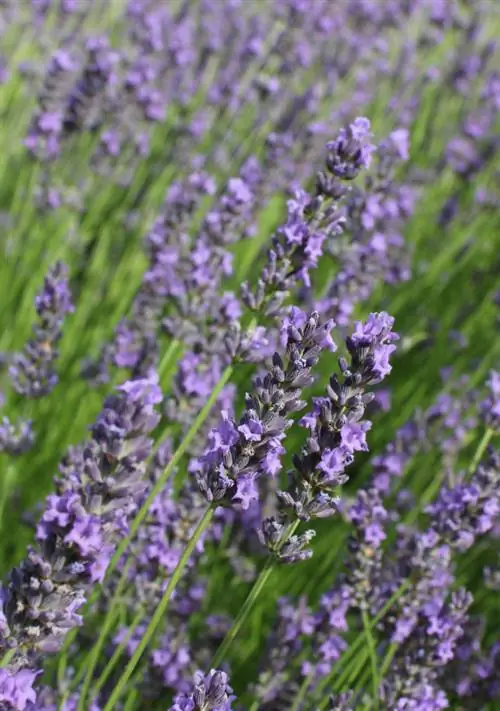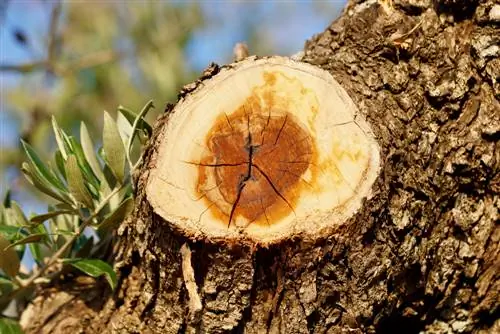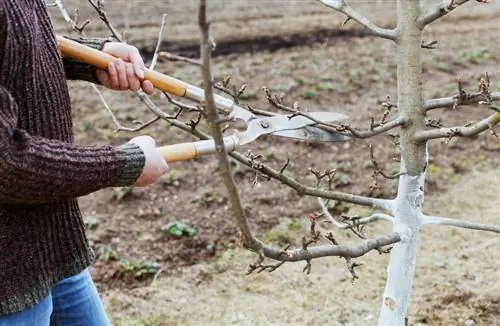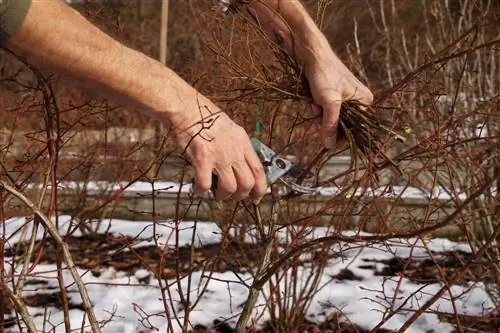- Author admin [email protected].
- Public 2023-12-16 16:46.
- Last modified 2025-01-23 11:21.
The close relationship between mirabelle plums and plums results in similar pruning care. All Prunus species benefit from regular pruning care aimed at young, productive fruiting wood. You can find out here when and how to prune a mirabelle plum tree in an exemplary manner.
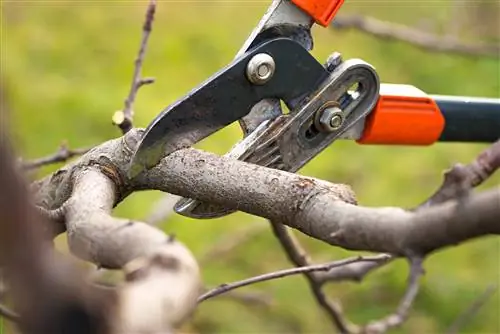
When and how should you prune a mirabelle plum tree?
The best time to successfully prune a mirabelle tree is in autumn, ideally in October or November. The focus of pruning care is on all four to five-year-old shoots, trying to maintain a balance between fertile and sterile branches.
Best time is in autumn
A strong rubber flow has a decisive influence on the choice of date. Like all stone fruits, an apricot tree will bleed profusely if you cut the crown in the middle of the growing season. The fruit tree will be more forgiving if you cut it in October or November.
As a further advantage, a leafless crown provides a better overview for the perfect cut. Last but not least, an autumn pruning time is in line with the Federal Nature Conservation Act, which prescribes the period from October 1st to February 28th for tree pruning.
Cut Mirabelle every 2 years
Starting with the third year, you should cut your mirabelle plum tree every two years. The focus of pruning care is on all four to five-year-old shoots whose productive capacity has been exhausted. The most valuable treasure of the fruit tree crown are the two to three-year-old shoots, which should not be overshadowed by dead wood or sterile wood shoots. With this cut you can do it:
- Old, heavily drooping branches indicate a deeper side shoot
- Cut back thick competing shoots to the leading branches to 10 cm short cones
- Short dead wood, steep shoots and branches growing into the inside of the crown to 5-10 cm
Unbranched long shoots from this season do not yet show in autumn whether they will bloom and bear fruit. Cut the relevant branches back by a maximum of a third if they are 20 centimeters long or more. If the growth is directed steeply upwards, tie the shoot horizontally. This year's shoots under 20 centimeters remain uncut.
Distinguish between fertile and sterile shoots
The key to success in fruit tree pruning is to distinguish between fertile and infertile branches. The following overview summarizes which characteristics you can use to distinguish valuable fruit wood from sterile shoots in the mirabelle tree:
- Barren woody shoot: only bears tapered, slender shoot buds
- Mixed branch: ideal mix of thick flower buds and narrow shoot buds
- Fruit rod: distinctive flower buds, terminal shoot bud on the up to 30 cm long branch
- Fruit spike: 5 to 6 flower buds on a 2-5 cm short shoot, often with a single shoot bud at the end
The primary goal of pruning is a balanced ratio between fertile and sterile branches. Ideally, both variants should be balanced within one crown. An oversupply of fruit wood results in puny fruit. If infertile woody shoots dominate, you will struggle with low harvest yields.
Tip
With a well-formed crown, a mirabelle plum tree thrives as a feast for the eyes. The perfectly straight trunk extension plays a key role in ensuring that three to four valuable guide branches develop as a framework. When planting, drive a support post up to 2.50 meters long into the ground next to the young tree. Then guide the sprouting trunk extension vertically with soft binding material (€8.00 on Amazon) that does not cut into the bark.



